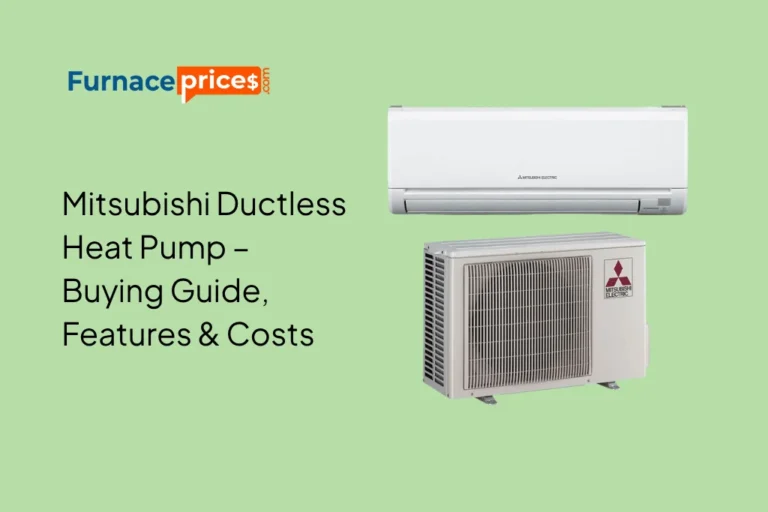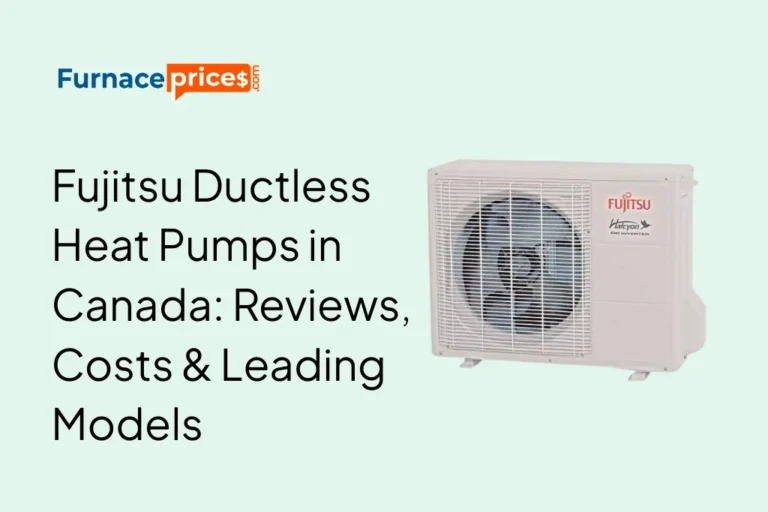Buying a New Furnace: 15 Expert Tips to Help You Choose the Right Heating System

Introduction
If you’re planning to replace your old furnace or buying one for the first time, you’re making a smart investment in your home’s comfort, safety, and efficiency. Modern high-efficiency furnaces are designed to deliver reliable warmth throughout Canada’s harsh winters while helping you save on energy bills. But with so many brands, fuel types, and models available, knowing where to begin can feel overwhelming.
This guide breaks down 15 practical furnace buying tips to help Canadian homeowners — especially those in Ontario cities like Toronto, Ottawa, Hamilton, and London — find the best high-efficiency furnace for their needs, budget, and long-term comfort. Whether you’re upgrading for better performance, energy savings, or rebate eligibility, these expert-backed tips will help you make an informed local decision.
1. Choose a High-Efficiency Furnace with a Strong AFUE Rating
When shopping for a furnace, one of the first things to look at is the AFUE (Annual Fuel Utilization Efficiency) rating. This number shows how effectively a furnace converts fuel into usable heat. For example, a furnace with an AFUE of 95% means that 95% of the fuel energy becomes heat for your home, while only 5% is lost through exhaust.
Older furnaces often have AFUE ratings of 60–70%, meaning a large portion of fuel is wasted. Today’s high-efficiency furnaces can reach up to 99% AFUE, giving you almost complete fuel utilization. That translates to lower heating costs, reduced greenhouse gas emissions, and consistent indoor comfort.
If you’re upgrading from an older system, a modern ENERGY STAR®-certified furnace can cut your energy bills by as much as 40–45%, depending on your home’s insulation and fuel source. For most Canadians, a model rated 95% or higher is a solid benchmark for energy efficiency and long-term value.
2. Look for Rebates and Incentives Before Buying a New Furnace
One of the most effective ways to lower the cost of a new furnace is by taking advantage of rebates and incentive programs. Many government initiatives, energy organizations, and utility companies across Canada offer rebates to encourage homeowners to switch to high-efficiency heating systems.
To qualify, the furnace usually needs to meet a minimum efficiency threshold (often 96% AFUE or higher) and be installed by a licensed contractor. Keep in mind that most programs require pre-approval before installation, so check eligibility early in your buying process.
Ontario residents, for instance, can explore local utility incentives or Canada-wide programs such as the Greener Homes Grant. A certified HVAC professional can often help handle the rebate paperwork, saving you both time and money.
3. Know When It’s Time to Replace Your Furnace
If your furnace is more than 15 years old, frequently needs repairs, or struggles to maintain even heating, it might be time for a replacement. Modern furnaces are far more efficient and can quickly offset their cost through reduced fuel consumption.
Here are a few signs it’s time to upgrade:
- Your heating bills have been steadily increasing.
- You hear unusual noises or experience irregular heating cycles.
- Repairs are becoming more frequent or costly.
- Your home feels colder despite higher thermostat settings.
While a tune-up can sometimes resolve issues, older furnaces simply can’t match the performance and reliability of today’s high-efficiency models. Replacing your furnace before winter hits ensures your home stays comfortable and your system operates safely. Homeowners across Ontario — including Toronto, Mississauga, Brampton, and Hamilton — often find that upgrading to a new, energy-efficient furnace not only improves comfort but also enhances property value and reduces long-term utility costs.
4. Hire a Qualified and Licensed Contractor
A furnace is only as reliable as the person who installs it. Industry professionals estimate that installation quality accounts for about 60% of furnace performance and reliability, with the brand and model making up the rest.
Always choose a TSSA-certified (or provincial equivalent) contractor who follows local building and gas codes. Proper installation not only ensures safety but also prevents costly efficiency losses, breakdowns, and even red tags from your gas provider if the setup fails inspection.
Look for a contractor who:
- Offers at least a 1-year labour warranty
- Has verifiable experience with your chosen furnace type
- Provides transparent quotes with no hidden fees
- Is insured and properly licensed
Some HVAC companies offer package deals when you install a full system (e.g., furnace + air conditioner + humidifier), which can provide savings and simplify future maintenance. A trusted local professional can also help ensure your furnace qualifies for available rebates.
For Ontario homeowners in areas like Toronto, Ottawa, Kitchener, and Brampton, hiring a nearby certified HVAC expert ensures faster service, compliance with regional codes, and ongoing support for maintenance or warranty needs. Local contractors also understand climate demands, helping your furnace perform optimally in cold Canadian winters.
5. Explore Flexible Financing Options
Replacing a furnace is a significant investment, but flexible financing options can make it much more manageable. Many Canadian homeowners prefer convenient payment plans that allow them to spread the cost over one to fifteen years without straining their monthly budget.
There are typically three main options:
- Standard financing: Pay off the furnace in instalments, often with fixed interest rates.
- Rent-to-own programs: Pay a monthly fee that covers the furnace and includes repairs or maintenance. These usually don’t require credit approval.
- Leasing plans: Similar to renting, where you make ongoing payments without eventual ownership, but all maintenance is handled by the provider.
While renting or leasing often leads to higher long-term costs, these plans can be attractive for homeowners seeking predictable monthly payments and full service coverage. In Ontario cities like Toronto, Hamilton, and London, many local HVAC companies now partner with financing providers to offer affordable furnace replacement plans — helping residents stay warm without large upfront expenses.
.
6. Know What Truly Matters When Buying a New Furnace
It’s easy to get caught up in brand names, flashy features, or marketing claims, but what truly matters is expert installation, dependable performance, and long-term service support. Most leading furnace brands in Canada — including Lennox, Carrier, Trane, Goodman, and others — offer similar quality when compared within the same efficiency class.
Rather than focusing solely on the brand, prioritize the following:
- Verified energy efficiency (look for ENERGY STAR® or EnerGuide-certified models)
- A strong warranty that covers key components and labour
- Easy access to replacement parts through local suppliers or dealers
- Reliable contractor support for installation and future maintenance
Ultimately, a well-installed, mid-range furnace can easily outperform a premium model that’s poorly set up. For homeowners in Ontario communities like Mississauga, Ottawa, or Guelph, partnering with a trusted local HVAC expert ensures proper sizing, setup, and support — the true factors that determine long-term comfort and furnace reliability.
7. Take Online Reviews with Caution
Online reviews can be helpful when researching furnaces, but they shouldn’t be the only factor guiding your decision. Many review sites feature unverified feedback or lean heavily toward negative experiences, as satisfied homeowners rarely take the time to share positive ones.
Keep these points in mind:
- Installation quality often determines furnace performance — not just the brand.
- Top furnace manufacturers sell thousands of units each year, so a few complaints are normal.
- Verified customer references from your local HVAC contractor are far more trustworthy than anonymous online posts.
Use online reviews as a starting point for research, but rely on local expertise and professional recommendations before deciding. In Ontario cities such as Toronto, Barrie, or Kitchener, local HVAC contractors can provide authentic references from nearby customers, giving you a more accurate sense of reliability and service quality in your area.
8. Speak with Local HVAC Experts
Every home is different — factors like square footage, insulation quality, duct layout, and regional climate all influence how efficiently a furnace performs. Consulting with a licensed HVAC professional ensures you choose the right furnace size (BTU output), fuel type, and configuration tailored to your home’s unique requirements.
A qualified professional will:
- Assess your home’s heating load and recommend the proper system capacity.
- Suggest the most efficient furnace models suited to your home and budget.
- Explain installation procedures and smart thermostat options.
- Review maintenance routines and warranty coverage so you know exactly what to expect.
A quick consultation with a local Ontario HVAC expert — whether you’re in Toronto, Ottawa, or Kingston — helps you avoid issues like oversized or undersized systems, which can increase energy costs and reduce comfort. Working with a nearby specialist also ensures your furnace meets Ontario building codes and is optimized for local climate conditions.
9. Get Multiple Free Estimates
Furnace installation costs can vary significantly depending on your location, home layout, and equipment selection. To ensure you’re getting fair value, always request at least two or three written estimates from certified HVAC contractors before making a final decision.
A reputable company should provide:
- Free in-home assessments or virtual consultations to evaluate your specific heating needs.
- Transparent cost breakdowns that include labour, materials, and any additional services.
- Clear explanations of warranty coverage and maintenance options.
Comparing multiple quotes helps you spot pricing inconsistencies and ensures your contractor fully understands your home’s heating requirements. Be cautious of offers that appear “too good to be true” — unusually low quotes can sometimes signal poor installation quality or hidden fees.
For homeowners across Ontario cities like Toronto, Windsor, and Burlington, local HVAC professionals often provide no-obligation quotes that include recommendations for energy-efficient models and rebate eligibility, helping you make a confident, informed decision.
10. Upgrade with a Programmable or Smart Thermostat
Pairing your new furnace with a programmable or smart thermostat can significantly boost comfort and energy savings. These smart devices learn your habits and automatically adjust temperatures based on your schedule, reducing energy use when you’re asleep or away from home.
Here are a few more effective ways to improve efficiency:
- Lower your thermostat by a few degrees to save up to 6% on heating costs.
- Seal leaks in ductwork to prevent heat loss and improve airflow.
- Use transparent window insulation film to trap warmth inside.
- Add weatherstripping around doors and windows to stop drafts.
- Boost attic and wall insulation for consistent comfort.
- Install ceiling fans in reverse mode to circulate warm air evenly.
- Close vents in unused rooms to focus heat where it’s needed.
- Schedule annual maintenance to keep your furnace performing efficiently.
These simple, affordable upgrades not only make your home more comfortable but also help Ontario homeowners cut down on winter energy bills while maximizing furnace lifespan.
11. Keep Up with Regular Maintenance
Routine maintenance is key to ensuring your furnace performs efficiently and lasts for years. Change or clean your air filter every one to three months, depending on usage and indoor air quality. A clogged filter restricts airflow, forcing the system to work harder and consume more energy.
Beyond filters, schedule annual professional inspections, ideally every fall before the heating season. Technicians will check components, clean burners, test safety controls, and verify efficiency levels. Occasional duct cleaning is also beneficial, especially in older homes or those with pets.
Consistent maintenance not only prevents breakdowns but can extend your furnace’s lifespan by several years. For Ontario homeowners in cities like Toronto, Brampton, or Oshawa, timely servicing ensures compliance with local safety codes and helps maintain warranty coverage while keeping heating costs low during harsh winters.
12. Understand Warranty Coverage
Before finalizing your purchase, take the time to carefully review both the manufacturer’s and contractor’s warranty terms. Most new furnaces come with:
- A 10-year parts warranty
- A 20-year or lifetime heat exchanger warranty
- An optional labour warranty from your installer (typically 1 year minimum)
Avoid contractors who don’t provide written guarantees for their work. If you choose rent-to-own or leasing programs, make sure all parts, labour, and maintenance are covered throughout the entire term.
Additionally, skipping annual maintenance, neglecting filter changes, or hiring unlicensed technicians for repairs can void your warranty — always follow the manufacturer’s service schedule. In Ontario cities like Toronto, Hamilton, and Vaughan, reputable HVAC companies offer extended coverage options, giving homeowners greater peace of mind and long-term protection for their heating investment.
13. Pick the Right Fuel Type for Your Home
In Canada, the most common fuel options for furnaces are natural gas, propane, and electricity. The ideal choice depends on your location, energy rates, availability of services, and local infrastructure.
- Natural Gas Furnaces: The most popular and cost-effective option in Ontario cities such as Toronto, Mississauga, and Ottawa. They provide steady heat, are energy-efficient, and connect directly to the local gas supply — meaning no fuel deliveries to manage.
- Propane Furnaces: A great option for rural or off-grid areas without access to natural gas lines. Propane burns cleaner and delivers consistent warmth but can be slightly more expensive due to fuel delivery and tank maintenance.
- Electric Furnaces: Known for quiet operation and low maintenance, electric models are ideal in regions with stable hydroelectric power. However, they can be more costly to operate where electricity rates are high.
Before making a decision, consult with a local HVAC contractor to compare long-term energy costs and efficiency levels. They can help you determine which fuel type aligns best with Ontario’s energy rates and your home’s specific heating demands.
14. Ensure Proper Sizing — Bigger Isn’t Always Better
Choosing the right furnace size is one of the most important factors in achieving comfort, efficiency, and long-term performance. A furnace that’s too large will short cycle — turning on and off repeatedly — which wastes energy, increases wear on components, and may create uneven heating. On the other hand, a furnace that’s too small will run constantly, struggle to maintain your desired temperature, and lead to higher energy bills.
Professional HVAC contractors perform a Manual J load calculation to determine the ideal BTU capacity for your home, considering factors such as square footage, insulation, number of windows, and local climate conditions. This scientific approach ensures your system operates efficiently and provides consistent warmth.
For Ontario homeowners in regions like London, Kingston, or Barrie, accurate furnace sizing is particularly crucial due to varying winter temperatures. Working with a licensed local contractor guarantees your system is perfectly matched to your home’s needs — maximizing energy savings and extending equipment lifespan.
15. Common Furnace Buying FAQs
While furnaces can be purchased year-round, late summer and early fall often bring off-season discounts and faster installation times.
With proper maintenance and professional installation, most high-efficiency furnaces last 15–20 years or more.
Standard replacements can usually be completed within one day, though additional time may be needed for ductwork or code updates.
Depending on the model, size, and installation complexity, homeowners can expect to pay $3,000–$6,000, with premium systems reaching higher ranges. Costs vary by province and local market rates.
Final Thoughts: Choose Smart When Buying a New Furnace, Stay Warm
Buying a new furnace is a significant decision that affects your comfort and energy costs for years to come. By focusing on efficiency, proper installation, and trusted contractors, you can enjoy a reliable heating system that keeps your home comfortable through every Canadian winter.
If you’re unsure where to start, don’t worry — expert help is available.
Have questions about choosing the right furnace for your home?
Our comprehensive guides and network of certified HVAC professionals can help you compare options, request quotes, and make informed decisions.
👉 Visit FurnacePrices.com today to explore expert advice or request a free, no-obligation furnace quote from a trusted local contractor.
For more information on energy efficiency standards and incentives in Canada, visit Natural Resources Canada.
📞 Have questions? Contact us or email us at contact@furnaceprices.com.
✅ Start comparing today and make the right choice with confidence!







